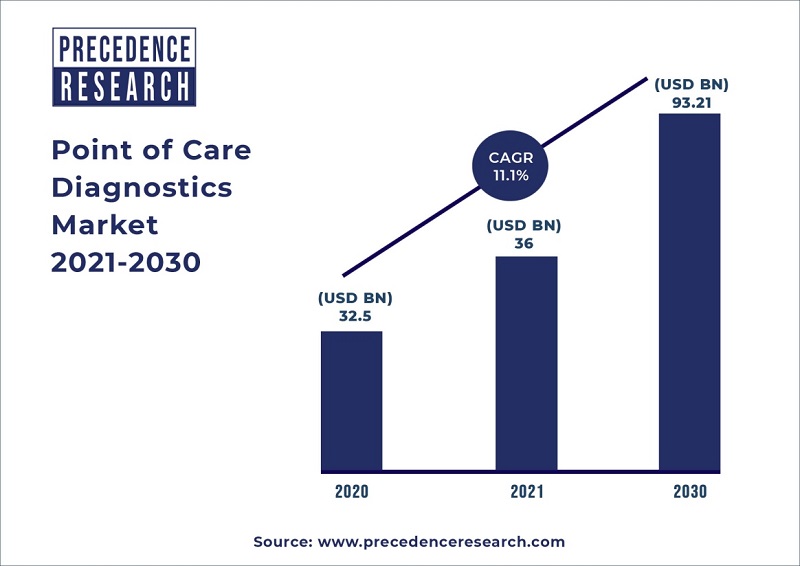Behold the Market
Checkout our business strategy.

The Consumers
The end-user for our device are primary care physicians, nurse practitioners, and physician assistants. In total that is 295k primary care professionals in the USA. The payer of our device will be a Group Purchasing Organization (GPOs) who work with the majority of hospitals to source and negotiate prices for medical devices on behalf of healthcare providers as shown in the graphic above [1].

The Market
Tchnavio has published a new market research report on the global point of care (POC) diagnostics market from 2019-2023. The 10% CAGR is reflecting the shift from conventional testing methods to POC diagostics becuase it enables more rapid clinical decisions, faster turn around times, reduced cost, and small specimen volume. Graphic: Business Wire [2]

Point of care device Market
The point of care (POC) diagnostic industry is mainly known for blood glucose measurements and pregnancey test. The recent growth of POC testing is due to the outbreak of COVID-19 that has expedited the need for rapid detection of disease rather than the gold standard of sending a sample to a lab. Now more than ever there is increased pressure to improve patient management by decreasing the turn around time. The efficiency provided by POC test allows doctors to rule-in or rule-out possibilities sooner and speed up treatment options. POC test also allow primary care professionals to take preemptive steps before requesting unnecessary blood work. While there are no competing Nasopharyngeal POC devices to detect CSF or cortisol there are a few standard tests available. Normally for cortisol a health professional will take a blood sample from a vein in your arm. For cortisol testing its important to perform one in the morning when levels are expected to be highest and again at 4:00pm when levels lower. CSF most commonly involves sending samples out to labs for gel electrophoresis testing. Another option for CSF is a halo test for fluid secretions coming out of the ear or nose. As well as fluoro lumbar punctures, which involves injecting dye into the spinal column and detects leaks using CT scans. Graphic: Presedence Research [3]

Why us and not our competitors?
Base is our closest competitor in POC testng for cortisol. The biggest catch with Base is the 2 month wait time for results in comparison with our 15 minutes. Base's biggest drawback is that it requires both a blood and saliva sample from the patient. The biggest advantage Base has is that they include a phone app that provides suggestions on how to change lifestyle habits based off your results. With more time it's possible for us to provide a simmilar feature for patients. Graphic: Base [4]

Why us over the Gold Standard?
Our point of care device yields quick results with high accuracy, and requires only a swab to collect a sample from the nose. Gel electrophoresis and blood test, while accurate requires a larger sample and takes 3-5 days to obtain results [5]. Graphic: Unsplash